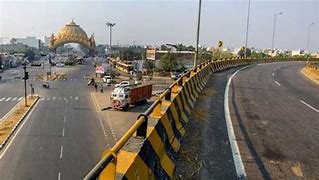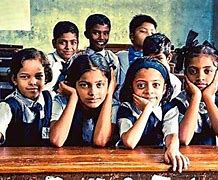Feature
SC asks Haryana, Punjab to ensure law and order ahead of INLD protest
 New Delhi : The Supreme Court on Wednesday asked both Haryana and Punjab to maintain law and order in light of the proposed march by activists of Haryana’s INLD to “dig” the Sutlej-Yamuna Link Canal even as it asked Punjab to honour its orders on the water link.
New Delhi : The Supreme Court on Wednesday asked both Haryana and Punjab to maintain law and order in light of the proposed march by activists of Haryana’s INLD to “dig” the Sutlej-Yamuna Link Canal even as it asked Punjab to honour its orders on the water link.
As a bench of Justice Pinaki Chandra Ghose and Justice Amitava Roy asked both states to maintain law and order, it was told that Director General of Haryana Police has written to Union Home Secretary that the state police will maintain law and order for the march by the Indian National Lok Dal (INLD).
“We will pass an order that there should not be any hassle in maintain law and order,” the bench said, while also making it clear that its orders for completing the construction of the SYL canal stretch falling within its territory has to be honoured by the Punjab.
“This can’t go on. The highest court of the land is passing orders and that is not being honoured,” the bench said underlining: “Enough was enough, every good thing comes to an end, we are keen to finish it.”
It told Punjab that it will have to complete the construction of the SYL canal and only then its plea that the water sharing award was not executable could be looked into.
The court asked both Punjab and Haryana to maintain law and order, as senior counsel Ram Jethmalani told the bench about the planned march into Punjab by one lakh people who would start from Ambala on Thursday morning to enter Punjab and dig the SYL canal.
As senior counsel Jagdeep Dhanka told the court that he was in Chandigarh on the previous day and Haryana government was taking every step to deal with the situation, Jethmalani told the court that the state has given the permissions for the planned march and was encouraging it.
“It would be difficult for this court to cancel the permission”, the bench said as Jethmalani urged the court to intervene.
Asking Solicitor General Rajit Kumar to ask the Central government to have an overview of the situation and maintain general surveillance, the bench asked it to discharge its role in the dispute.
Jethmalani urged the court that the dispute could only be resolved with the assistance of some “good people” from both the sides sitting and the Central government playing the role of a mediator.
The Solicitor General however said that the Central government could play any role in the completion of the construction of SYL canal only when the Punjab Termination of Agreement Act, 2004 was declared unconstitutional.
He told the court that even though constitution bench in its advisory opinion to the Presidential reference had in 2016 held that the Act was unconstitutional but since it was an advisory opinion, the legislation continues to survive.
Fixing March 2 as the next date of hearing, the court said that any settlement through talks can take place only if both the sides are ready. Otherwise it should be legal process and legal process along can take it to its logical conclusion, it added.
Entertainment
Meghalaya Reserves Legalized Gambling and Sports Betting for Tourists

The State Scores Extra High on Gaming-Friendly Industry Index
Meghalaya scored 92.85 out of 100 possible points in a Gaming Industry Index and proved to be India’s most gaming-friendly state following its recent profound legislation changes over the field allowing land-based and online gaming, including games of chance, under a licensing regime.
The index by the UK India Business Council (UKIBC) uses a scale of 0 to 100 to measure the level of legalisation on gambling and betting achieved by a state based on the scores over a set of seven different games – lottery, horse racing, betting on sports, poker, rummy, casino and fantasy sports
Starting from February last year, Meghalaya became the third state in India’s northeast to legalise gambling and betting after Sikkim and Nagaland. After consultations with the UKIBC, the state proceeded with the adoption of the Meghalaya Regulation of Gaming Act, 2021 and the nullification of the Meghalaya Prevention of Gambling Act, 1970. Subsequently in December, the Meghalaya Regulation of Gaming Rules, 2021 were notified and came into force.
All for the Tourists
The move to legalise and license various forms of offline and online betting and gambling in Meghalaya is aimed at boosting tourism and creating jobs, and altogether raising taxation revenues for the northeastern state. At the same time, the opportunities to bet and gamble legally will be reserved only for tourists and visitors.
“We came out with a Gaming Act and subsequently framed the Regulation of Gaming Rules, 2021. The government will accordingly issue licenses to operate games of skill and chance, both online and offline,” said James P. K. Sangma, Meghalaya State Law and Taxation Minister speaking in the capital city of Shillong. “But the legalized gambling and gaming will only be for tourists and not residents of Meghalaya,” he continued.
To be allowed to play, tourists and people visiting the state for work or business purposes will have to prove their non-resident status by presenting appropriate documents, in a process similar to a bank KYC (Know Your Customer) procedure.
Meghalaya Reaches Out to a Vast Market
With 140 millions of people in India estimated to bet regularly on sports, and a total of 370 million desi bettors around prominent sporting events, as per data from one of the latest reports by Esse N Videri, Meghalaya is set to reach out and take a piece of a vast market.
Estimates on the financial value of India’s sports betting market, combined across all types of offline channels and online sports and cricket predictions and betting platforms, speak about amounts between $130 and $150 billion (roughly between ₹9.7 and ₹11.5 lakh crore).
Andhra Pradesh, Telangana and Delhi are shown to deliver the highest number of bettors and Meghalaya can count on substantial tourists flow from their betting circles. The sports betting communities of Karnataka, Maharashtra, Uttar Pradesh and Haryana are also not to be underestimated.
Among the sports, cricket is most popular, registering 68 percent of the total bet count analyzed by Esse N Videri. Football takes second position with 11 percent of the bets, followed by betting on FIFA at 7 percent and on eCricket at 5 percent. The last position in the Top 5 of popular sports for betting in India is taken by tennis with 3 percent of the bet count.
Local Citizens will Still have Their Teer Betting
Meghalaya residents will still be permitted to participate in teer betting over arrow-shooting results. Teer is a traditional method of gambling, somewhat similar to a lottery draw, and held under the rules of the Meghalaya Regulation of the Game of Arrow Shooting and the Sale of Teer Tickets Act, 2018.
Teer includes bettors wagering on the number of arrows that reach the target which is placed about 50 meters away from a team of 20 archers positioned in a semicircle.
The archers shoot volleys of arrows at the target for ten minutes, and players place their bets choosing a number between 0 and 99 trying to guess the last two digits of the number of arrows that successfully pierce the target.
If, for example, the number of hits is 256, anyone who has bet on 56 wins an amount eight times bigger than their wager.























